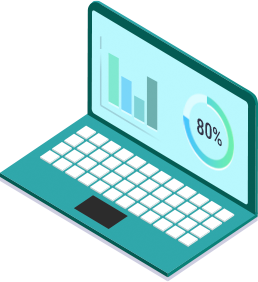Whether or not you believe in Microsoft’s claim in its 2015 report that the average human attention span has shrunk from 12 seconds in 2000 to 8 seconds in 2013, it is irrefutable to say that we have changed how we consume information to accommodate for the sheer volume of it we now face everyday. For example, according to Facebook IQ, for any type of content, people only spend an average of 1.7 seconds on mobile and 2.5 seconds on desktop. That is super quick. So how do we share knowledge effectively while maintaining focus in a time when we’re only given mere seconds to capture someone’s attention?
Micro-learning, or information broken down and presented in digestible chunks, is an approach strongly compatible with our present-day situation. Steering away from long lectures and countless slides, micro-learning sticks to being short and sweet. In fact, it is typically recommended to keep lessons under a maximum of 5 minutes, if not shorter. Furthermore, each micro-learning module should only have a single learning objective so that all information presented within the module will focus solely on teaching this topic.
Want to dive into more details about micro-learning? Read on to discover the 5 key benefits of micro-learning and why it fits in with the context of today.

Retainable, Concise Content
As explained in the beginning, information in micro-learning modules are concise and focused on teaching a single learning objective, making it easier for learners to retain the main takeaway. For example, between an hour-long lecture on how to drive a manual car, or a 3 minute step-by-step on how to turn on a manual car’s engine, which do you think you can retain more information? Concentration levels also tend to stay higher for the short duration of a micro-learning module, increasing the likelihood of learners to retain more information than in longer sessions.
Flexible, Stress-Free Learning
In this day and age where we have the freedom to work remotely or on-the-go, it is only natural for people to seek for flexibility when it comes to learning and development as well. Having ready-made micro-learning modules will allow learners to access and acquire the skills they find most relevant, at any time and place, and at their own pace. In addition, long eLearning courses or training sessions can be overwhelming and boring for learners, who will have to find the time to fit this into their busy day. Since micro-learning breaks down information into small chunks and the durations are short, it can be much more encouraging for learners to take a spare minute to pick up useful skills.
Easy Content Creation and Maintenance
Say goodbye to long lesson plans, and hello to 5 minute how-to guides. From a trainer or administrator’s standpoint, micro-learning modules are much easier to build and maintain due to its short and focused format. This also enables learning to become agile because it will be much easier to create content meeting the specific needs of a particular moment or person. What’s more, the world is evolving faster than ever, thanks to innovations in technology. Micro-learning modules are the perfect way to align your people with organizational objectives and strategies changing rapidly to adapt to the evolving times.
Just-in-Time Content Delivery
Related to the point above, thanks to the ease of creating micro-learning content, information that is most essential to the learner can be sent just-in-time, at the exact moment when the learner most needs it. For example, you can send new employees a module on how to set up the company email account on their first day at work for a smooth onboarding process or send store staff a module on how to showcase the new product line in preparation for its launch the next day. The short and to-the-point nature of micro-learning makes content building hassle-free for trainers, while the information relayed becomes more relevant to the learner.
Learn, then Apply Immediately
Did you know that according to the Cone of Experience, people generally remember 10% of what they read, 20% of what they hear, 50% of what they read and hear, and a 90% of what they actually do? It goes without saying that learning then applying is incredibly important for people to retain information. Micro-learning modules teach applicable skills within a matter of minutes, allowing learners to apply what they had just learned straight after. This, in turn, switches learners from being passive recipients of information to active learners, improving their chances of properly retaining the information. Furthermore, since each micro-learning module focuses on teaching a single objective or concept, learners will be able to choose what is most applicable and relevant to them now.

Although this list is only the tip of the iceberg, we have outlined here some of the strongest benefits of micro-learning. We hope we got across that the micro-learning approach efficiently spoon feeds the most relevant information in manageable portions, making it an effective way to learn (and teach!) in this increasingly busy and fast-paced world.


